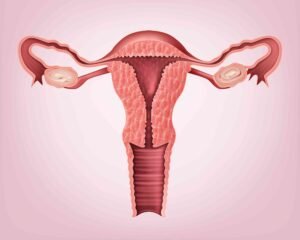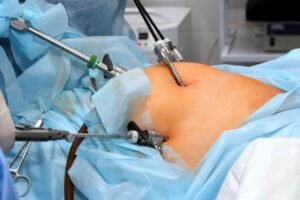The Role of the Endometrium in IVF Success
Understanding the Endometrium in IVF Success
When embarking on the journey of in vitro fertilization (IVF), much attention is often given to egg quality, sperm health, and embryo grading. However, a critical yet sometimes overlooked player in this process is the endometrium—the inner lining of the uterus. The endometrium plays a pivotal role in IVF success, serving as the nurturing ground where an embryo implants and begins its development.
In this blog, we’ll delve into the significance of the endometrium in IVF success, exploring its functions, the factors influencing its receptivity, and strategies to optimize its condition for better IVF outcomes.
The Endometrium: More Than Just a Lining
The endometrium is a dynamic tissue that undergoes cyclical changes in response to hormonal fluctuations throughout the menstrual cycle. Its primary function is to prepare for potential embryo implantation each month. During the first half of the cycle, estrogen stimulates the proliferation of the endometrial lining, thickening it in anticipation of ovulation. Following ovulation, progesterone promotes the transformation of the endometrium into a secretory state, making it receptive to an implanting embryo.

In the context of IVF, the synchronization between embryo development and endometrial receptivity is crucial. Even the highest quality embryo cannot implant successfully if the endometrium is not adequately prepared to receive it.
The Window of Implantation:
The “Window of Implantation” refers to a specific period during the menstrual cycle when the endometrium is most receptive to embryo implantation. This window typically occurs between days 20 and 24 of a standard 28-day cycle, corresponding to about 6 to 10 days after ovulation. During this time, the endometrium exhibits structural and molecular changes that facilitate embryo attachment and invasion.
In IVF cycles, accurately identifying and aligning embryo transfer with this window is essential. Misalignment can lead to implantation failure, even with viable embryos. Techniques like the Endometrial Receptivity Analysis (ERA) test have been developed to assess the optimal timing for embryo transfer by analyzing gene expression patterns in the endometrial tissue.

Assessing Endometrial Receptivity
Several methods are employed to evaluate the readiness of the endometrium for implantation:
1. Ultrasound Measurement of Endometrial Thickness
Transvaginal ultrasound is commonly used to measure endometrial thickness. Studies suggest that an endometrial thickness of at least 7 mm is associated with higher implantation rates. However, optimal thickness alone does not guarantee receptivity; the endometrial pattern and vascularity also play roles.
2. Endometrial Pattern Assessment
The endometrial pattern observed on ultrasound can provide insights into its receptivity. A “triple-line” pattern, characterized by a central echogenic line surrounded by hypoechoic regions, is often associated with better outcomes. This pattern reflects the layered structure of the endometrium during the proliferative phase.
3. Endometrial Receptivity Analysis (ERA)
The ERA test involves taking a biopsy of the endometrial tissue and analyzing the expression of genes associated with receptivity. This personalized approach can help determine the optimal timing for embryo transfer, especially in cases of repeated implantation failure.
Factors Influencing Endometrial Receptivity
Several factors can impact the receptivity of the endometrium:
1. Hormonal Balance
Adequate levels of estrogen and progesterone are essential for proper endometrial development. Hormonal imbalances can disrupt the preparation of the endometrium, leading to suboptimal conditions for implantation.
2. Uterine Pathologies
Conditions such as fibroids, polyps, or intrauterine adhesions can alter the endometrial environment, hindering implantation. Surgical interventions may be necessary to address these issues before proceeding with IVF.
3. Chronic Endometritis
Chronic inflammation of the endometrial lining, often due to infection, can impair receptivity. Diagnosis typically involves endometrial biopsy and histological examination, with antibiotic treatment prescribed if necessary.

4. Endometrial Microbiome
Emerging research suggests that the composition of the endometrial microbiome—the community of microorganisms residing in the uterus—may influence implantation success. A predominance of Lactobacillus species is considered favorable, while the presence of pathogenic bacteria may be detrimental.
Strategies to Enhance Endometrial Receptivity
Optimizing the endometrium for implantation involves a multifaceted approach:
1. Hormonal Support
In IVF cycles, supplemental estrogen and progesterone are often administered to mimic the natural hormonal environment and support endometrial development.
2. Lifestyle Modifications
Maintaining a healthy lifestyle can positively impact endometrial receptivity. Regular exercise, a balanced diet, stress management, and avoiding smoking and excessive alcohol consumption are beneficial.
3. Addressing Uterine Pathologies
Surgical procedures, such as hysteroscopic removal of polyps or fibroids, can restore the normal architecture of the endometrium and improve implantation prospects.

4. Antibiotic Therapy
In cases of chronic endometritis, appropriate antibiotic treatment can resolve inflammation and enhance receptivity.
5. Probiotic Supplementation
While research is ongoing, some studies suggest that probiotic supplementation may help maintain a favorable endometrial microbiome, potentially improving implantation rates.
Conclusion
The endometrium plays a crucial role in IVF success, serving as the site where the embryo implants and begins its development. Understanding and optimizing endometrial receptivity can significantly enhance the chances of a successful pregnancy. By assessing factors such as endometrial thickness, pattern, and microbiome composition, and implementing strategies to address any issues, individuals undergoing IVF can improve their prospects for a positive outcome.


